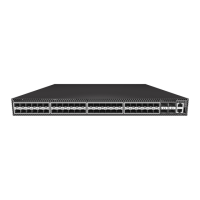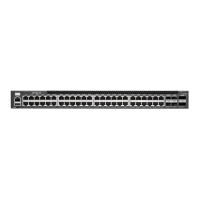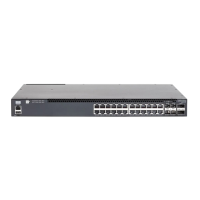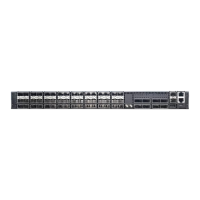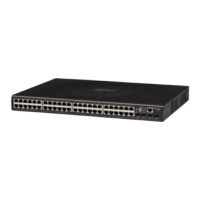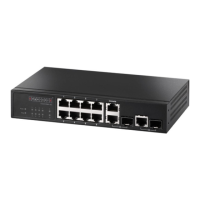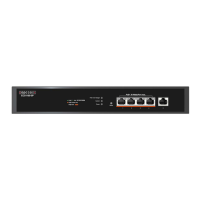Chapter 29
| IP Routing Commands
Border Gateway Protocol (BGPv4)
– 911 –
◆ COMMUNITY – This attribute associates routing information with a community
of users. These communities share a common property, and tagging routes
with a community makes it easier for routers to identify that property and
enforce appropriate routing policies.
◆ ORIGINATOR_ID – This attribute is included when a route reflector reflects a
route. Then if the reflector later receives a route with its own originator ID, a
potential routing loop can be broken.
◆ CLUSTER_LIST – This attribute is of a list of the clusters through which a route
has been reflected. Every route reflector adds its own cluster ID to the list. If the
reflector receives a route with its own cluster ID, a potential routing loop can be
broken.
◆ MP_REACH_NLRI – This attribute describes routes for network protocols other
than IPv4. The attribute identifies the protocol with an address family identifier
(AFI) and a subsequent address family identifier (SAFI). It contains the address
of the next hop router for the destinations, as well as the link level (e.g.,
Ethernet) addresses for that next hop. It concludes with the destinations
expressed as prefixes.
◆ MP_UNREACH_NLRI – This attribute withdraws non-IPv4 routes. It includes the
route’s AFI, SAFI, and network address prefixes.
◆ EXTENDED-COMMUNITIES – This attribute provides a mechanism for labeling
various information carried in route advertisements. It provides an extended
type field to ensure that communities can be assigned for a broad range of
uses, without fear of overlap.
Path Selection
When there are multiple paths to the same prefix (with the same prefix length), the
information included in route advertisement is used to select the best path to a
destination following the rules shown below.
1. Choose the path with the highest WEIGHT. If the value of this attribute is the
same for more than one candidate, go to the next step.
2. Choose the path with the highest LOCAL-PREF. If the value of this attribute is
the same for more than one candidate, go to the next step.
3. Choose the path that was generated by the local router with the network or
aggregate-address command. If the value of this criteria is the same for more
than one candidate, go to the next step.
4. Choose the path with the shortest AS_PATH. If the value of this attribute is the
same for more than one candidate, go to the next step. Note that this attribute
may be disabled in the selection process using the bgp bestpath as-path ignore
command.

